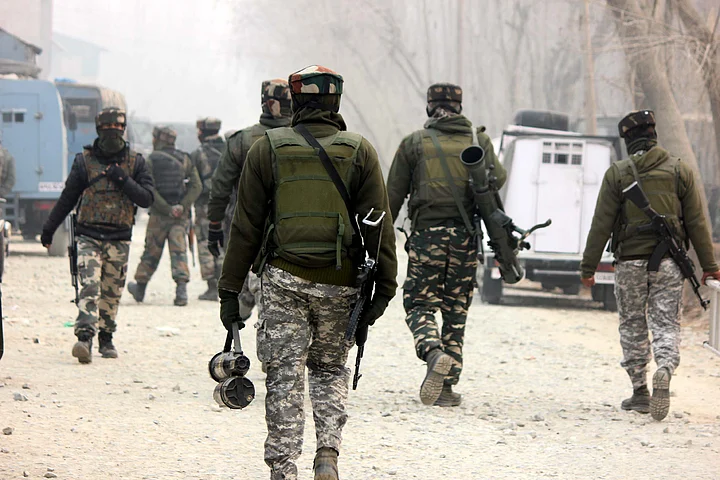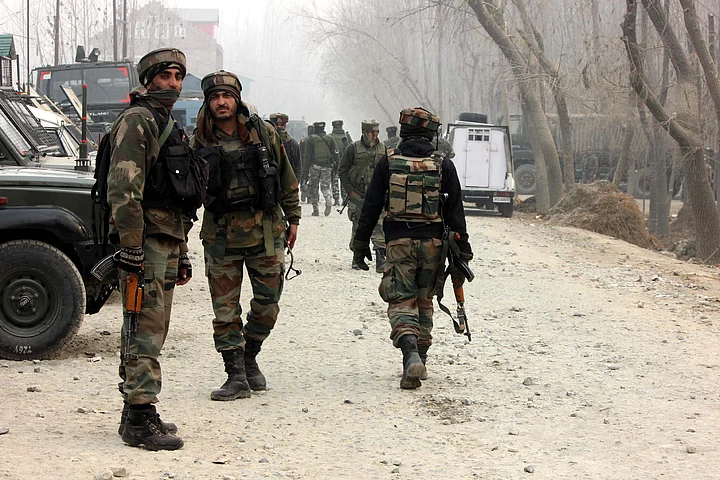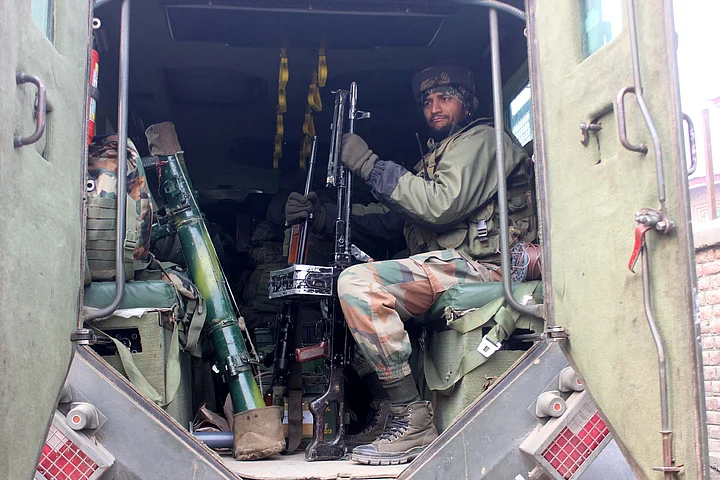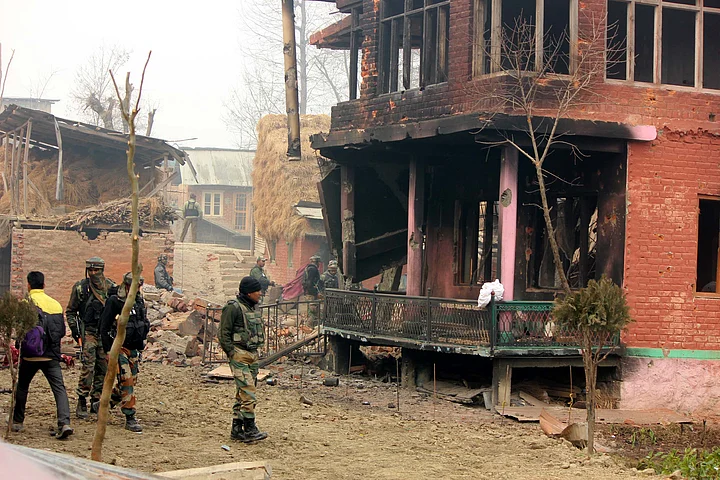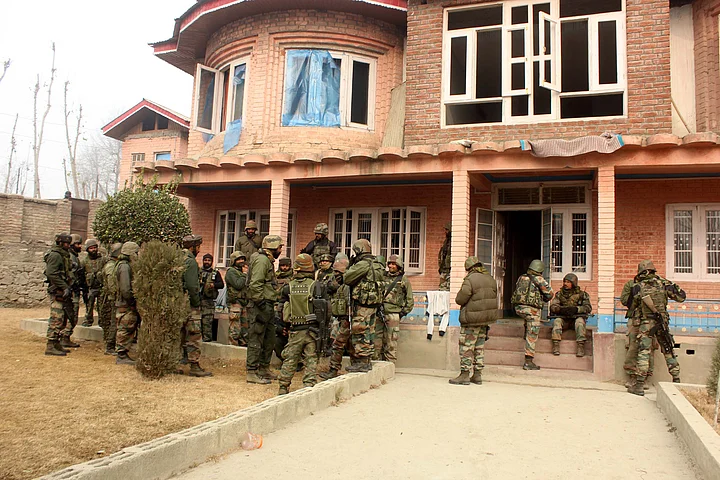Majid Zargar, 20, last visited his home in a south Kashmir village sometime in 2012 when the scars of 2010 summer uprising were still fresh. At the time when militancy in the Valley was seemingly on its last legs, Zargar, a brilliant alumni of a prestigious missionary school in Anantnag, joined Lashkar-e-Taiba, climbing its ranks to become the district commander for Kulgam.
On Friday, he was brought home as a “lump of flesh, blood and bones”. The body was charred beyond recognition. So was the body of another militant killed in the encounter at Arwani village of Anantnag district. In an emotional atmosphere charged by the roar of slogans chanted in unison by thousands of mourners, the body was brought to a large ground close to his home for funeral prayers.
“There were not two bodies. There were two lumps of flesh, blood and bones. One family took one lump and the other was taken by another. It was merely a formality of burying the dead. But they fought till the end. They didn’t give up till their last breath,” one of the mourners said as the body was lifted to be taken to the graveyard.
Setback or Breakthrough?
The siege in Arwani lasted more than 40 hours, prolonged by thousands of men, women and children who clashed with security forces in attempts to break the cordon around the house where a group of militants was holed up – Lashkar-e-Taiba's Kashmir chief Abu Dujana believed to be one of them.
By the time the siege entered its second day, news started trickling in that Dujana, who masterminded some of the worst attacks in recent past on the forces in the Valley, like Udhampur and Pampore strikes, may have escaped.
It was a liberated zone for four months post Burhan’s killing. Then police and Army started doing random patrols in the area. An encounter raid was the last thing on the minds of people but they were prepared to deal with the consequences of what they were doing by supporting militants. In fact, many youths mockingly danced in front of police and Army on Thursday to celebrate the escape of militants.A local, wishing anonymity
According to local witnesses, forces opened fire on the celebrating crowd, resulting in the killing of one civilian while at least four dozen were wounded in two days of clashes.
Charred bodies of two militants killed in an encounter at Arwani village were handed over to their families.
The encounter had lasted more than 40 hours, prolonged by thousands of men, women and children who clashed with security forces
According to local witnesses, forces opened fire on the crowd, resulting in the killing of one civilian while at least four dozen were wounded
Although the Army said three militants were killed, the body of the third militant has not been recovered
In Qaimoh, where Arwani is situated, more than 30 youths have been killed in encounters in the recent past
Political Alienation
Qaimoh area, part of Homeshalibugh constituency, where Arwani falls, is a Jama'at-e-Islami bastion which recorded one of the lowest voter turnouts in the 2014 assembly elections. There are dozens of villages in the area which have largely remained outside the ambit of mainstream politicians.
However, this was not the case always. Jama'at had won many elections from the area. Before armed insurgency erupted in the 1980s, the constituency was represented by a MUF candidate whose leader, Syed Salahuddin, is now the United Jehad Council (UJC) chief. The UJC oversees nearly two dozen militant outfits operating in J&K.
Today, however, the villagers barely care. The rigging of 1987 elections has left a mark on the people. From Rampora village of Qaimoh alone, according to estimates by rights groups, more than 30 youths joined militants and have been killed in encounters with security forces in recent past, prompting the Hurriyat leader Syed Asiya Andrab, to erect a board, renaming the village 'Shohdapur' – the village of martyrs.
In fact, Jehangir Ganai, the son of the owner of the house where the encounter took place and who was accused of being an overground worker for Lashkar, was killed in the first week of protests that swept Kashmir following the killing of Hizbul Mujahideen commander Burhan Wani.
Deepening Mystery
On Thursday, the second day of the encounter, the Army told PTI news agency that three militants had been killed in the encounter at Arwani. The news was widely carried by many national newspapers and on websites of TV channels.
As if on cue, the United Jehad Council issued a statement, condoling the demise of three militants. Terming the killings as a "jolt to the militancy" in Kashmir, the UJC chief Salah-ud-Din said there are "thousands others ready to fight". "The youth of Kashmir have vowed to sacrifice their lives for sake of Islam and Kashmir’s freedom. We will fight until we achieve success,” he said.
One of the constituents of Mirwaiz Umar Farooq-led moderate Hurriyat also claimed to have attended the funeral prayers of the three militants killed in the Arwani encounter, except that only two bodies were recovered from the site. Did the third militant vanish into air? No one seems to have answer for this question. Not the police. Not even the Army.
(At The Quint, we question everything. Play an active role in shaping our journalism by becoming a member today.)

